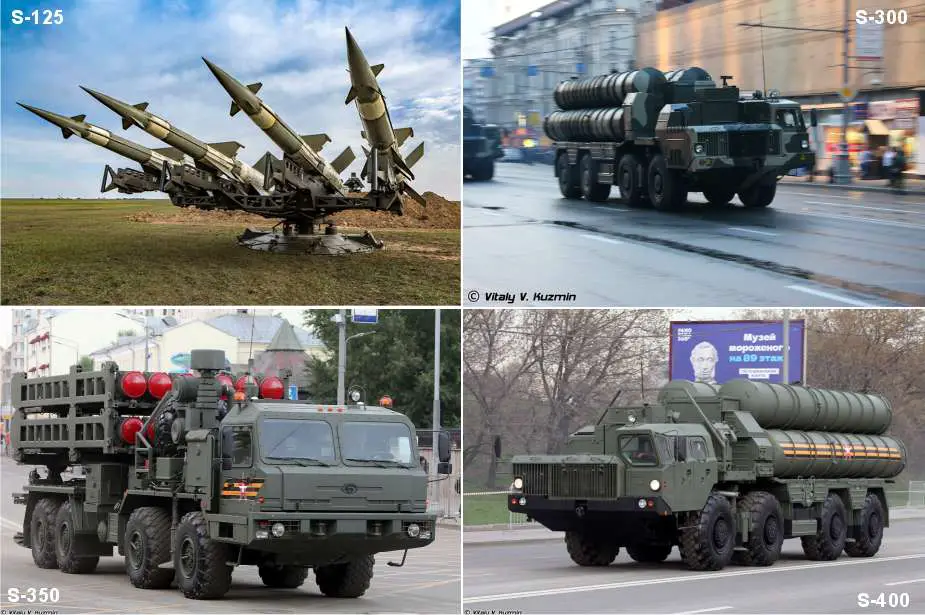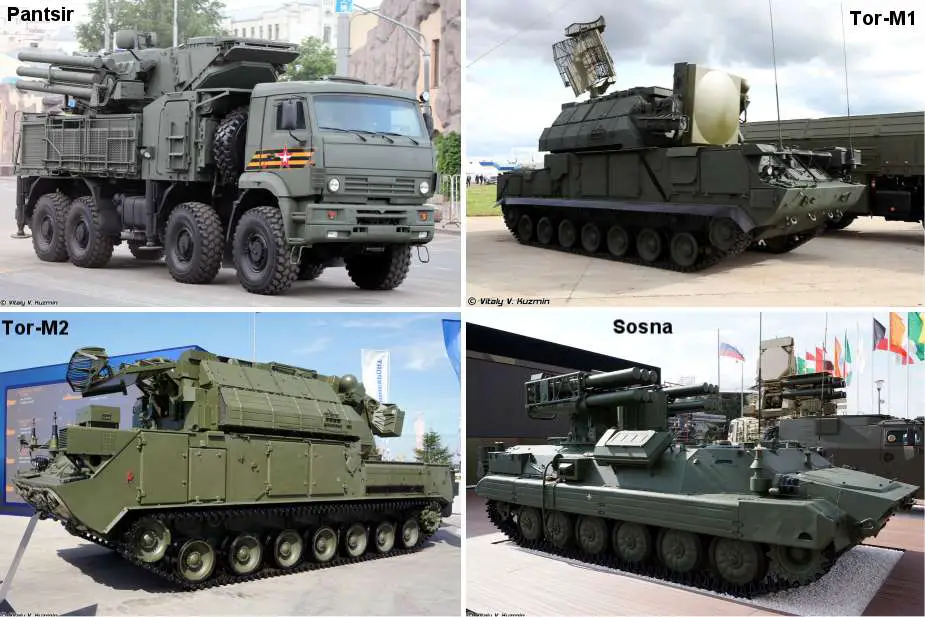Breaking news
Analysis of Russian air defense systems possibly used to shoot Prigozhyn's Embraer business jet down.
In the realm of international security, the efficiency of air defense systems stands as a critical consideration. A recent event has just brought a dramatic incident to the forefront: on August 23, 2023, a Wagner Group's Embraer Legacy 600 business jet registered RA-02795 crashed after having possibly been shot down by a so-far-undetermined air defense missile (no doubt that both "black boxes" (Flight Data Recorder and Cockpit Voice Recorder) will "unfortunately" be declared unusable or deliver unverifiable results.
Follow Army Recognition on Google News at this link

Russia has numerous air defense systems, including the Buk-M2, S-300, Pantsir, and S-125 (Picture source Yandex and Vitaly Kuzmin)
This aircraft, carrying ten individuals, including Wagner Group leader Evgueni Prighozin and Wagner Group founder Dmitri Utkin (who, as an admirer of the 3rd Reich, had the SS runes tattooed on his collarbones), was tragically struck by a missile. The incident prompts a closer examination of Russia's air defense systems, with the S-300 system being a probable focal point due to its widespread deployment and capabilities.
This analysis delves into the core features and operational mechanics of Russia's primary air defense systems, taking into account the potential role of the S-300 system in the events of August 23, 2023. With an emphasis on factual accuracy and unbiased evaluation, we explore the technical specifications and historical context surrounding Russia's air defense capabilities. By doing so, we aim to unravel the layers of defense that are in place to safeguard the nation's airspace.
Join us in a comprehensive exploration of Russian air defense systems, as we seek to better comprehend the potential factors at play during the August 23 incident. From a neutral standpoint, we delve into the systems that underscore Russia's commitment to upholding aerial sovereignty in a dynamically evolving global landscape.
2K12 Kub (SA-6 Gainful)
The 2K12 Kub was developed in the Soviet Union during the 1960s as a medium-range air defense system. It was introduced into service in 1967 and has been exported to various countries. The system can engage aircraft and missiles within a range of around 23 km. It features a radar-guided missile with a speed of up to 600 m/s, providing a reliable defense against various aerial threats.

Russia has numerous air defense systems, including the 2K12 Kub, Buk-M1, Buk-M2, and Buk-M3 (Picture sources: Army Recognition, Yandex and Vitaly Kuzmin)
Buk series (Buk-M1, Buk-M2 and Buk-M3)
The Buk-M1 (SA-11 Gadfly) is a medium-range surface-to-air missile system developed by the Soviet Union. It was introduced in the early 1980s and has seen various upgrades since then. The Buk-M1 can engage multiple targets simultaneously, including aircraft and cruise missiles. Its radar system allows for tracking and targeting in all weather conditions, with a range of up to 32 km.
An evolution of the Buk-M1, the Buk-M2 (SA-17 Grizzly) was introduced in the late 1990s. It features enhanced capabilities and technology. The Buk-M2 can engage various aerial targets, including aircraft and missiles, within a range of around 50 km. Its advanced radar and missile systems provide improved accuracy and response time.
The Buk-M3 Viking is an upgraded version of the Buk-M2 system, featuring further enhancements in technology and capabilities. With a range of 70 km, the Buk-M3 offers improved tracking and targeting capabilities. It can engage multiple targets simultaneously and is designed to counter modern aerial threats.

Russia has numerous air defense systems, including the S-125, S-300, S-250 and S-400 (Picture sources: Yandex and Vitaly Kuzmin)
S-Series (S-125, S-300, S-350 and S-400)
Developed in the 1950s, the S-125 Neva/Pechora (SA-3 Goa) is an older medium-range air defense system still in use in some capacities. The system can engage aircraft at ranges of up to 15 km. Its radar-guided missiles are capable of intercepting targets at various altitudes, providing a versatile defense option.
The S-300 (SA-10 Grumble) is a series of long-range air defense systems developed by the Soviet Union starting in the late 1960s. Several variants exist, with varying ranges and capabilities. The S-300P variant can engage aircraft, ballistic missiles, and cruise missiles at ranges of up to 47 km. Its advanced radar and missile technology provide a robust defense against a wide range of aerial threats.
The S-350 Vityaz is a medium-range air defense system designed to replace older S-300 systems. It was introduced in the 2010s. Capable of engaging a wide range of targets, including aircraft and ballistic missiles, the S-350 Vityaz has a range of up to 120 km. Its modern radar and missile systems provide enhanced targeting and interception capabilities.
The S-400 Triumf (SA-21 Growler) is a long-range air defense system developed in Russia. Introduced in 2007, it is considered one of the most advanced systems of its kind. The S-400 can engage multiple targets simultaneously, including aircraft, ballistic and cruise missiles, within a range of up to 400 km. Its state-of-the-art radar and missile technology provide unparalleled defense capabilities.
Pantsir-S1 (SA-22 Greyhound)
The Pantsir-S1 is a short-to-medium-range air defense system developed in Russia. Introduced in 2008, it combines anti-aircraft missiles and anti-aircraft artillery. Designed to engage various aerial threats, including aircraft, helicopters, drones, and precision-guided munitions, the Pantsir-S1 has a range of up to 12 km, upgraded to 30 km in its S-2 variant. Its combination of missiles and artillery provides a layered defense.
Tor-M1 (SA-15 Gauntlet)/ Tor-M2
The Tor-M1 is a short-to-medium-range air defense system developed in the Soviet Union. It was introduced in the 1980s as a mobile and versatile defense solution. Designed to engage aircraft, helicopters, and drones, the Tor-M1 has a range of up to 12 km. Its radar-guided missiles provide reliable interception capabilities.
The Tor-M2 is an upgraded version of the Tor-M1, featuring improved capabilities and technology. With a range of about 15 km, the Tor-M2 is designed to engage aircraft, helicopters, drones, and precision-guided munitions. Its advanced radar and missile systems provide enhanced targeting and defense.
Sosna
The Sosna is a short-range air defense system developed in Russia. It is designed to counter a variety of threats, including drones and precision-guided munitions. With a range of up to 10 km, the Sosna utilizes laser-guided missiles to engage targets. Its compact and mobile design allows for rapid deployment and response to emerging threats.
Other air defense systems
There are numerous other Russian air defense systems, including the 2K11 Krug, Gibka-S, SA-9 Gaskin, SA-19 Tunguska, S-200, and Strela-10.

Russia has numerous air defense systems, including the Pantsir, Tor-M1, Tor-M2, and Sosna (Picture source: Vitaly Kuzmin)
Defense News August 2023


























